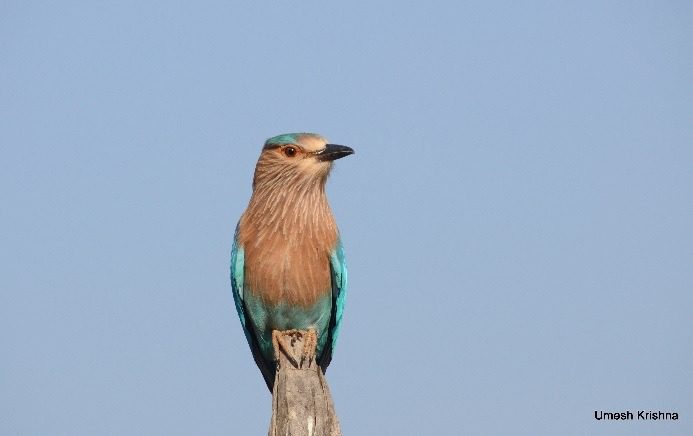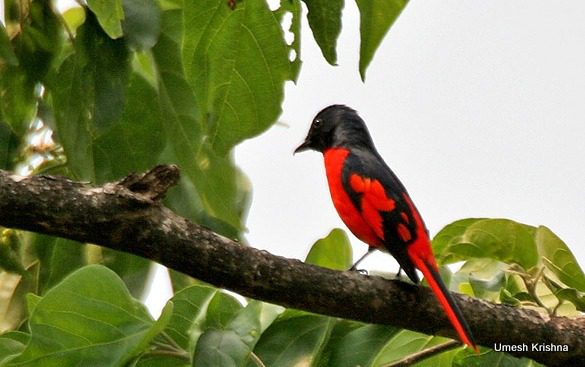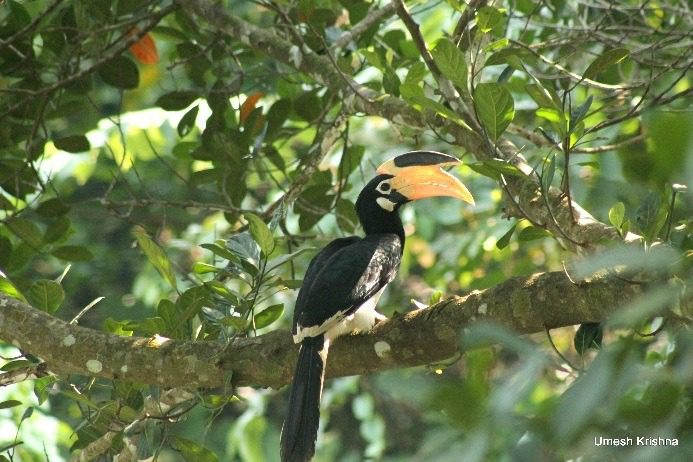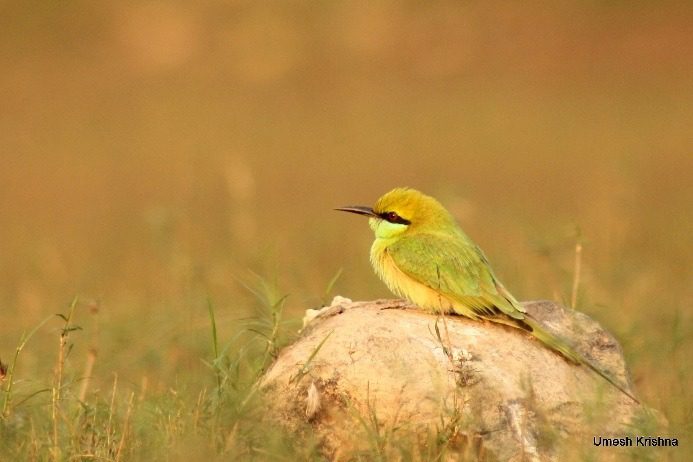Birds of Kanha National Park
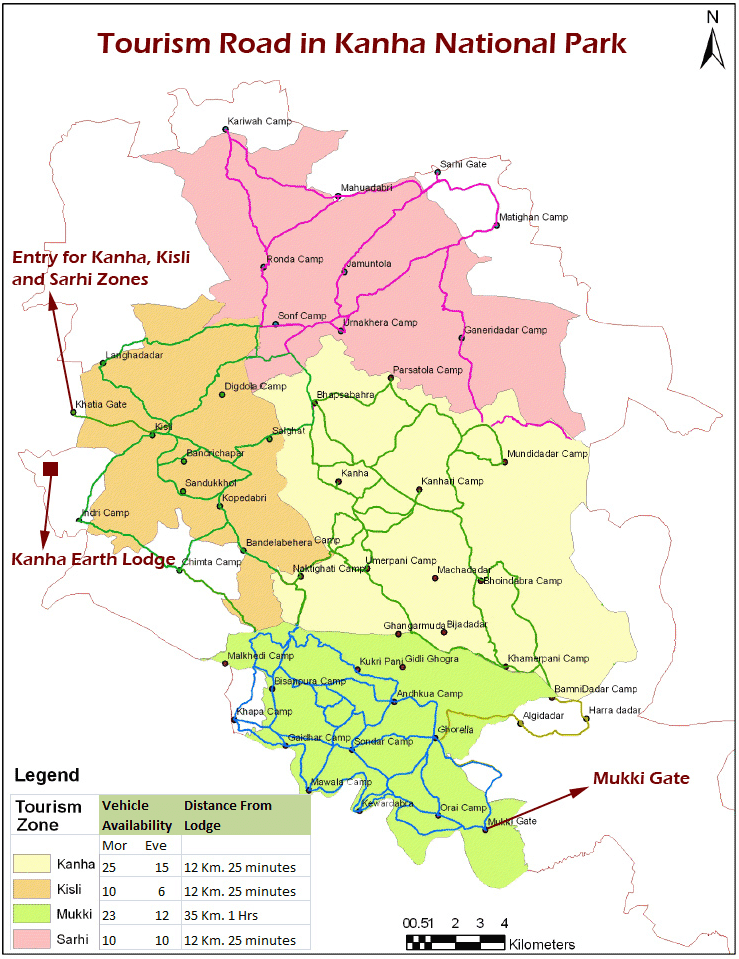
India is a home to more than 1300+ species of birds. Indian avifauna includes large variety of unique and rare species, ranging from very small Tickell’s Flowerpecker (around 8 cm)to the giant like Sarus Crane (height around 1800 cm). It also includes high altitude flyers (from 25,000 feet) to barely lifting few feet in the air.
Kanha National Park has open grasslands and meadows, areas with dense forests, many water bodies and lakes, network of running streams and nalas and under growth vegetation creating ambience and environment viable to support and nurture variety of birds.
The best season for a bird watching at Kanha Tiger Reserve is during winter. Many migratory birds visit India during winter, offering bonus to bird watchers and intensifies beauty of forests. On the other hand, month of April is very good to see local birds as Mahua (Madhuca Indica) and many other local plants are in full bloom. Best way of enjoying bird watching trip is to trek inside buffer zone of Kanha with an expert, where you will get to see the most species. Do carry a Binocular, Bird Guide book and loads of patience to enjoy and experience awesomebirds.
Avifauna of Kanha National Park
The kaleidoscopic avian beauty seen inside Kanha National Park is one of a lifetime experience. Kanha National Park is the major central Indian forest famous for Royal Bengal Tiger and Swamp Deer (Barasingha). It has more than 300+ species of birds, few commonly seen beautiful birds are illustrated further in this article.
Scarlet Minivet (Pericrocotus speciosus)
The scarlet minivet is a small passerine bird, which is common resident breeding bird in forests and other well-wooded habitats. The scarlet minivet is 20–22 cm long with a strong dark beak and long wings. The male has black head, and beautiful scarlet underparts, tail, rump and wing patches. The female is grey with yellow. One can notice their pleasant whistling and can easily spot them because of their bright colour. This bird nests high up in the treetops. They feed on variety of caterpillars, crickets and other insects among foliage.
Black-hooded Oriole (Oriolus xanthornus)
Golden and Black-hooded Orioles are very commonly seen in and around Kanha national park. The black head of Black-hooded Oriole is an obvious distinction from other orioles. The male is striking, with the typical oriole black and yellow colouration. The plumage is predominantly yellow, with a solid black hood, and black also in the wings and tail centre. They feed on insects, fruits and berries such as figs. They nest during summer mostly in the months of April to July.
Indian Roller (Coracias Benghalensis)
The Indian Roller earlier known as the Blue Jay is a member of the roller family, commonly found in southern Asia. They are found in open grassland and light forest areas of Kanha National Park. It is among the most easily and commonly seen bird of Kanha. The blue-brown colour and its body-size make him recognize easily. The Indian Roller is ordinary dull in colour when resting, but when takes flight, the sudden flash of its blue wings catches eyes of everyone. Males and females are not easily distinguishable. An Indian Roller typically chooses an elevated perch and watch the ground in every direction. It sits motionless until an insect or other small animal becomes visible. It flies to the food source, catch it, and returns back to the same perch most of the time. It feeds on insects, arachnids, small reptiles, small snakes & rodents, grasshoppers and crickets.
Malabar Pied Hornbill (Anthracoceros coronatus)
The Malabar Pied Hornbill and Grey Hornbill are commonly seen in Kanha. It has mainly black plumage with a white belly, throat patch, tail sides and trailing edge to the wings. The bill is yellow with a large black casque. It is 95–130 cm long, with approximately150cm wingspan and a weighsaround 2–4kgs. Hornbills are omnivorous birds, eating fruit, insects and small animals. Its diet mainly consists of fruits. Their nesting behaviour is very interesting, where female lays eggs and remain inside the tree cavity till eggs hatches. During this period male feeds female and chicks. Nesting sites may be used in consecutive breeding seasons by the same pair.Their habitat is dense old growth forests in hilly regions. They appear to be dependent on large stretches of forest and they have beautiful flight displaying black and white colours.
Green Bee Eater (Merops orintalis)
Green Bee Eater belongs to bee-eater family and most species in this family are richly coloured and slender in shape. It is mostly bronze-green, with golden-green crown and nape, black eye line, pale bluish-green cheeks, chin, throat and breast. This beautiful bird has a wingspan of around 30 cm and size varies in 16-18 cm. Green Bee-eater feeds on bugs, termites, beetles, moths, flies, butterflies, crickets, dragonflies and spiders. They breeds in open country with bushes. Green Bee-eater frequents wooded areas with scattered trees and bushes, near streams and shores, close to cultivated areas and large gardens.
The Kanha zone
The Kanha zone map presented here helps in understanding the tourism areas inside Kanha National Park. The park is divided in four zones, all zones are beautiful and have different aspects of birding in form of grassland birds (e.g. Larks, Pipits and many more) to dense tree canopy birds (e.g. Scarlets, Warblers, Flowerpeckers etc.). All zones also have array of water sources and water bodies which offers sighting of variety of birds ranging from water birds and waders (e.g. Ducks, Goose, Herons, Storks etc.) to birds of prey (e.g. Grey headed fish eagle, Brown fish owl, Osprey etc.). There are many more things to talk about vibrant avifauna present inside Kanha, and I will keep adding about more species of birds and best places for sighting of these birds in coming days.
Written by – Umesh Krishna
Photographs – Umesh Krishna

